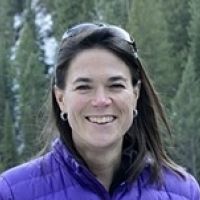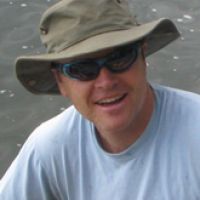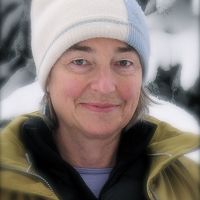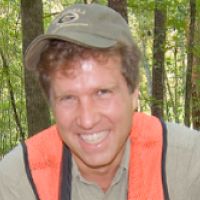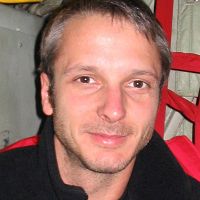Richter et al., 2018
Ideas and perspectives: Strengthening the biogeosciences in environmental research networks
Richter, D.D., S.A. Billings, P.M. Groffman, E.F. Kelly, K.A. Lohse, W.H. McDowell, T.S. White, S. Anderson, D.D. Baldocchi, S. Banwart, S. Brantley, J.J. Braun, Z.S. Brecheisen, C.W. Cook, H.E. Hartnett, S.E. Hobbie, J. Gaillardet, E. Jobbagy, H.F. Jungkunst, C.E. Kazanski, J. Krishnaswamy, D. Markewitz, K. O’Neill, C.S. Riebe, P. Schroeder, C. Siebe, W.L. Silver, A. Thompson, A. Verhoef, G. Zhang (2018)
Biogeosciences 15: 4815-4832 Cross-CZO National
-
Calhoun, INVESTIGATOR
-
Calhoun, INVESTIGATOR
-
National, ADVISORY BOARD
-
Reynolds, INVESTIGATOR
-
Luquillo, INVESTIGATOR
-
National, Shale Hills, INVESTIGATOR, STAFF
-
Boulder, INVESTIGATOR
-
National, Eel, Luquillo, Shale Hills, INVESTIGATOR, COLLABORATOR
-
Calhoun, GRAD STUDENT
-
Calhoun, STAFF
-
Calhoun, COLLABORATOR
-
Calhoun, INVESTIGATOR
-
Calhoun, INVESTIGATOR
-
Sierra, INVESTIGATOR
-
Calhoun, INVESTIGATOR
-
Luquillo, INVESTIGATOR
-
Calhoun, Luquillo, INVESTIGATOR, COLLABORATOR
Plain English Summary
As knowledge in biology and geology explodes, science becomes increasingly specialized. Given the overlap of the environmental sciences, however, the explosion in knowledge inevitably creates opportunities for interconnecting the biogeosciences. Here, 30 scientists emphasize the opportunities for biogeoscience collaborations across the world’s remarkable long-term environmental research networks that can advance science and engage larger scientific and public audiences.
Abstract
Figure 3. Core conceptual models of (a) ecologists’ ecosystem (Lindenmayer and Likens 2009, after Bormann and Likens 1967), (b) Earth scientists’ critical zone (courtesy of the Southern Sierras Critical Zone Observatory), and (c) an EON design (courtesy of the USA’s National Ecological Observatory Network) that includes an eddy covariance flux tower that is the basis for the FLUXNET program. The congruence of the ecosystem and critical zone concepts that guide these networks motivates biogeoscientists to consider how to get the most from these long-term research investments.
Long-term environmental research networks are one approach to advancing local, regional, and global environmental science and education. A remarkable number and wide variety of environmental research networks operate around the world today. These are diverse in funding, infrastructure, motivating questions, scientific strengths, and the sciences that birthed and maintain the networks. Some networks have individual sites that were selected because they had produced invaluable long-term data, while other networks have new sites selected to span ecological gradients. However, all long-term environmental networks share two challenges. Networks must keep pace with scientific advances and interact with both the scientific community and society at large. If networks fall short of successfully addressing these challenges, they risk becoming irrelevant. The objective of this paper is to assert that the biogeosciences offer environmental research networks a number of opportunities to expand scientific impact and public engagement. We explore some of these opportunities with four networks: the International Long-Term Ecological Research Network programs (ILTERs), critical zone observatories (CZOs), Earth and ecological observatory networks (EONs), and the FLUXNET program of eddy flux sites. While these networks were founded and expanded by interdisciplinary scientists, the preponderance of expertise and funding has gravitated activities of ILTERs and EONs toward ecology and biology, CZOs toward the Earth sciences and geology, and FLUXNET toward ecophysiology and micrometeorology. Our point is not to homogenize networks, nor to diminish disciplinary science. Rather, we argue that by more fully incorporating the integration of biology and geology in long-term environmental research networks, scientists can better leverage network assets, keep pace with the ever-changing science of the environment, and engage with larger scientific and public audiences.
Citation
Richter, D.D., S.A. Billings, P.M. Groffman, E.F. Kelly, K.A. Lohse, W.H. McDowell, T.S. White, S. Anderson, D.D. Baldocchi, S. Banwart, S. Brantley, J.J. Braun, Z.S. Brecheisen, C.W. Cook, H.E. Hartnett, S.E. Hobbie, J. Gaillardet, E. Jobbagy, H.F. Jungkunst, C.E. Kazanski, J. Krishnaswamy, D. Markewitz, K. O’Neill, C.S. Riebe, P. Schroeder, C. Siebe, W.L. Silver, A. Thompson, A. Verhoef, G. Zhang (2018): Ideas and perspectives: Strengthening the biogeosciences in environmental research networks. Biogeosciences 15: 4815-4832. DOI: 10.5194/bg-15-4815-2018
 This Paper/Book acknowledges NSF CZO grant support.
This Paper/Book acknowledges NSF CZO grant support.
Explore Further



